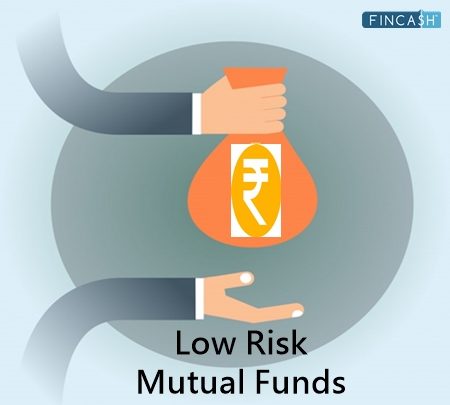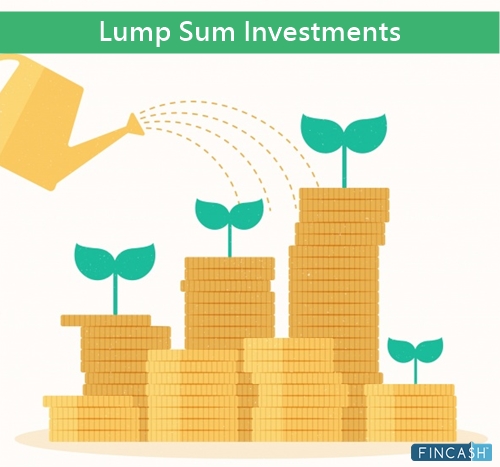Top 6 Best Gilt Funds To Invest In 2025
Want to invest during falling interest rates? Gilt Funds in India are an answer to this!
Gilt Mutual Funds provide good returns during times of falling interest rates depending upon its maturity (or duration). Investors Investing in these funds need to have enough time for tracking their investments since the NAVs of these funds move very sharply with movement in interest rates.
Gilts funds are often used by two kinds of investors. Firstly, those who primarily want little or no credit risk, since the securities are backed by the government of India (or the government of the country they belong to) hence they carry least possible credit risk.
How To Choose Best Gilt Debt Mutual Funds?
1. Duration And Average Maturity
When investing in gilt Debt fund, it becomes necessary to determine the average maturity and the duration of the fund. This can be obtained in the fact sheet of the fund, the average maturity relates to the average time taken for securities to mature. The higher the average maturity (or duration), the higher the sensitivity to interest rate movement. While a downward movement is positive to the NAV of the fund (and hence returns), and upward (or increase) movement of interest rates will impact the NAV negatively resulting in a loss.

Duration refers to the weighted average maturity of the securities in a Portfolio. It is a prime parameter used by analysts and others to determine the interest rate sensitivity of the mutual fund. If the funds are held for the time of duration of the portfolio and the fund manager does not do anything, then the investor will generate the yield on the portfolio, without being subjected to interest rate movements. Gilts funds are often used by two kinds of investors. Firstly, those who primarily want little or no credit risk, since the securities are backed by the government of India (or the government of the country they belong to), these investors invest for the yield and not for a view on interest rates. The other kind of investors who invest in Gilt Funds are the ones who take a view on interest rates, they would typically look at the maturity or duration of the portfolio and invest accordingly.
There are primarily three kinds of gilt funds that exist, short term, medium term and long term. Short term gilt funds have a low duration, typically less than a year. Long-term gilt funds can have a very high maturity period, at times going up to 10 to 15 years also. Long-term gilt funds are invested in for yield as well as playing the interest rate view by investors.
Talk to our investment specialist
2. Interest Rate Risk
Gilt funds and interest rates are archrivals. There is an inverse relationship between Gilt debt funds and interest rates. An increase or decrease in the interest rate causes the NAV of the fund to fall or rise. This results in the fluctuation in the fund’s return. In fact, such extreme Volatility in returns of the gilt funds makes them the riskiest in the debt mutual category. The impact is so profound that it may drive the yields to negative in the short run. Therefore, one should consider investing in gilt funds when Inflation is near its peak and the RBI (Reserve Bank of India) is not likely to raise the interest rate immediately. This would ensure there no downward movement in the NAV and hence returns. Any fall in interest rates would add to the returns of the fund.
A newbie investor should avoid investing in gilt mutual funds without a robust strategy.
Moreover, there are some other quantitative parameters that investors need to analyse before selecting the best Gilt Funds:
Look for a Gilt Fund that gives the most stable and consistent returns year-after-year. A fund having lesser volatility would be consistent. Volatility can be determined using the Beta and Standard Deviation (SD). Beta indicates how much fund’s return is sensitive to index movements. A beta of 1 signifies that the mutual fund NAV moves in line with the relevant benchmark, a beta of a greater than 1 designates that the NAV moves more than the relevant benchmark of the fund, and a beta of less than 1 means NAV moves less than the benchmark. Investors should decide before getting into a fund whether they want higher beta or low beta.Coming to SD, it is a statistical measure representing the volatility or risk of a fund. The higher the SD, higher will be the fluctuations in the returns. Ideally, investors look for funds with a lower standard deviation. However, if the investor is clear on the reason of investing and has reviewed the fund performance as well as portfolio & related parameters (yield, duration, maturity etc), this is something one can overlook.
The expense ratio is also one of the parameters to check your fund returns. It is advisable to go for a fund with a lower expense ratio in the same category. This is because the returns are derived after deducting expense ratio from the fund’s Total Return. Thus, the lower the expense ratio, the better returns it can deliver.
One needs to be careful in the entry and exit of their investments accurately. More importantly, considering important parameters to shortlist or invest in the best Gilt funds can be an optimal way to strengthen your portfolio. We take you to some of those parameters, following the best Gilt funds or Best Performing Mutual Funds to Invest in 2025.
Best Gilt Funds To Invest In FY 25 - 26
(Erstwhile SBI Magnum Gilt Fund Short Term) To provide the investors with the returns generated through investments in government securities issued by the Central Govt. and State Govt. Below is the key information for SBI Magnum Constant Maturity Fund Returns up to 1 year are on (Erstwhile ICICI Prudential Long Term Gilt Fund) To generate income through investment in Gilts of various maturities. Research Highlights for ICICI Prudential Gilt Fund Below is the key information for ICICI Prudential Gilt Fund Returns up to 1 year are on (Erstwhile UTI Gilt Advantage Fund- LTP) To generate credit risk-free return through investment in sovereign securities issued by the Central Government and / or a State Government and / or any security unconditionally guaranteed by the Central Government and / or a State Government for repayment of principal and interest. However there can be no assurance that the investment objective of the Scheme will be achieved. Research Highlights for UTI Gilt Fund Below is the key information for UTI Gilt Fund Returns up to 1 year are on (Erstwhile SBI Magnum Gilt Fund - Long Term Plan) To provide the investors with returns generated through investments in government securities issued by the Central Government and / or a State Government Research Highlights for SBI Magnum Gilt Fund Below is the key information for SBI Magnum Gilt Fund Returns up to 1 year are on The primary investment objective of the scheme is to generate optimal credit risk-free returns by investing in a portfolio of securities issued and guaranteed by the Central Government and State Government. Research Highlights for Nippon India Gilt Securities Fund Below is the key information for Nippon India Gilt Securities Fund Returns up to 1 year are on (Erstwhile Canara Robeco GILT PGS) To provide risk free return (except interest rate risk) and long term capital
appreciation by investing only in Govt. Securities. However, there can be no assurance that the investment objective of the scheme will be realized. Research Highlights for Canara Robeco Gilt Fund Below is the key information for Canara Robeco Gilt Fund Returns up to 1 year are on Fund NAV Net Assets (Cr) 3 MO (%) 6 MO (%) 1 YR (%) 3 YR (%) 2024 (%) Debt Yield (YTM) Mod. Duration Eff. Maturity SBI Magnum Constant Maturity Fund Growth ₹64.4984
↓ -0.13 ₹1,862 0.7 0.8 6.2 7.7 9.1 6.76% 6Y 10M 20D 9Y 7M 17D ICICI Prudential Gilt Fund Growth ₹103.995
↓ -0.11 ₹9,146 0.9 0.7 6.2 7.6 8.2 7.13% 6Y 1M 28D 17Y 5M 1D UTI Gilt Fund Growth ₹63.2376
↓ -0.06 ₹565 1.2 0.4 4.6 6.9 8.9 6.57% 5Y 7M 28D 8Y 2M 8D SBI Magnum Gilt Fund Growth ₹65.9879
↓ -0.15 ₹11,055 0.3 -0.4 3.8 6.9 8.9 6.93% 8Y 5M 12D 16Y 4M 17D Nippon India Gilt Securities Fund Growth ₹37.6871
↓ -0.06 ₹1,879 0 -1.2 2.6 6.1 8.9 7.25% 9Y 2M 19D 21Y 6M 25D Canara Robeco Gilt Fund Growth ₹74.7482
↓ -0.16 ₹147 -0.3 -1 2.5 6 8.8 6.97% 9Y 2M 14D 20Y 6M 26D Note: Returns up to 1 year are on absolute basis & more than 1 year are on CAGR basis. as on 10 Dec 25 Research Highlights & Commentary of 6 Funds showcased
Commentary SBI Magnum Constant Maturity Fund ICICI Prudential Gilt Fund UTI Gilt Fund SBI Magnum Gilt Fund Nippon India Gilt Securities Fund Canara Robeco Gilt Fund Point 1 Lower mid AUM (₹1,862 Cr). Upper mid AUM (₹9,146 Cr). Bottom quartile AUM (₹565 Cr). Highest AUM (₹11,055 Cr). Upper mid AUM (₹1,879 Cr). Bottom quartile AUM (₹147 Cr). Point 2 Established history (24+ yrs). Oldest track record among peers (26 yrs). Established history (23+ yrs). Established history (24+ yrs). Established history (17+ yrs). Established history (25+ yrs). Point 3 Top rated. Rating: 4★ (upper mid). Rating: 4★ (upper mid). Rating: 4★ (lower mid). Rating: 4★ (bottom quartile). Rating: 4★ (bottom quartile). Point 4 Risk profile: Moderately Low. Risk profile: Moderate. Risk profile: Moderate. Risk profile: Moderate. Risk profile: Moderate. Risk profile: Moderate. Point 5 1Y return: 6.23% (top quartile). 1Y return: 6.17% (upper mid). 1Y return: 4.61% (upper mid). 1Y return: 3.80% (lower mid). 1Y return: 2.56% (bottom quartile). 1Y return: 2.52% (bottom quartile). Point 6 1M return: -0.36% (upper mid). 1M return: -0.28% (upper mid). 1M return: -0.07% (top quartile). 1M return: -0.77% (lower mid). 1M return: -0.91% (bottom quartile). 1M return: -0.98% (bottom quartile). Point 7 Sharpe: 0.34 (upper mid). Sharpe: 0.35 (top quartile). Sharpe: -0.16 (upper mid). Sharpe: -0.19 (lower mid). Sharpe: -0.40 (bottom quartile). Sharpe: -0.42 (bottom quartile). Point 8 Information ratio: 0.00 (top quartile). Information ratio: 0.00 (upper mid). Information ratio: 0.00 (upper mid). Information ratio: 0.00 (lower mid). Information ratio: 0.00 (bottom quartile). Information ratio: 0.00 (bottom quartile). Point 9 Yield to maturity (debt): 6.76% (bottom quartile). Yield to maturity (debt): 7.13% (upper mid). Yield to maturity (debt): 6.57% (bottom quartile). Yield to maturity (debt): 6.93% (lower mid). Yield to maturity (debt): 7.25% (top quartile). Yield to maturity (debt): 6.97% (upper mid). Point 10 Modified duration: 6.89 yrs (upper mid). Modified duration: 6.16 yrs (upper mid). Modified duration: 5.66 yrs (top quartile). Modified duration: 8.45 yrs (lower mid). Modified duration: 9.22 yrs (bottom quartile). Modified duration: 9.21 yrs (bottom quartile). SBI Magnum Constant Maturity Fund
ICICI Prudential Gilt Fund
UTI Gilt Fund
SBI Magnum Gilt Fund
Nippon India Gilt Securities Fund
Canara Robeco Gilt Fund
1. SBI Magnum Constant Maturity Fund
SBI Magnum Constant Maturity Fund
Growth Launch Date 30 Dec 00 NAV (10 Dec 25) ₹64.4984 ↓ -0.13 (-0.21 %) Net Assets (Cr) ₹1,862 on 31 Oct 25 Category Debt - 10 Yr Govt Bond AMC SBI Funds Management Private Limited Rating ☆☆☆☆ Risk Moderately Low Expense Ratio 0.63 Sharpe Ratio 0.34 Information Ratio 0 Alpha Ratio 0 Min Investment 5,000 Min SIP Investment 500 Exit Load NIL Yield to Maturity 6.76% Effective Maturity 9 Years 7 Months 17 Days Modified Duration 6 Years 10 Months 20 Days Growth of 10,000 investment over the years.
Date Value 30 Nov 20 ₹10,000 30 Nov 21 ₹10,339 30 Nov 22 ₹10,401 30 Nov 23 ₹11,059 30 Nov 24 ₹12,176 30 Nov 25 ₹13,037 Returns for SBI Magnum Constant Maturity Fund
absolute basis & more than 1 year are on CAGR (Compound Annual Growth Rate) basis. as on 10 Dec 25 Duration Returns 1 Month -0.4% 3 Month 0.7% 6 Month 0.8% 1 Year 6.2% 3 Year 7.7% 5 Year 5.3% 10 Year 15 Year Since launch 7.8% Historical performance (Yearly) on absolute basis
Year Returns 2024 9.1% 2023 7.5% 2022 1.3% 2021 2.4% 2020 11.6% 2019 11.9% 2018 9.9% 2017 6.2% 2016 12.8% 2015 9.1% Fund Manager information for SBI Magnum Constant Maturity Fund
Name Since Tenure Sudhir Agarwal 1 Jul 25 0.34 Yr. Data below for SBI Magnum Constant Maturity Fund as on 31 Oct 25
Asset Allocation
Asset Class Value Cash 1.14% Debt 98.86% Debt Sector Allocation
Sector Value Government 98.86% Cash Equivalent 1.14% Credit Quality
Rating Value AAA 100% Top Securities Holdings / Portfolio
Name Holding Value Quantity 6.79% Govt Stock 2034
Sovereign Bonds | -74% ₹1,369 Cr 135,000,000 7.18% Govt Stock 2037
Sovereign Bonds | -24% ₹453 Cr 43,999,500 6.33% Govt Stock 2035
Sovereign Bonds | -1% ₹10 Cr 1,000,000
↓ -1,500,000 Net Receivable / Payable
CBLO | -1% ₹18 Cr Treps
CBLO/Reverse Repo | -0% ₹3 Cr 2. ICICI Prudential Gilt Fund
ICICI Prudential Gilt Fund
Growth Launch Date 19 Aug 99 NAV (10 Dec 25) ₹103.995 ↓ -0.11 (-0.10 %) Net Assets (Cr) ₹9,146 on 31 Oct 25 Category Debt - Government Bond AMC ICICI Prudential Asset Management Company Limited Rating ☆☆☆☆ Risk Moderate Expense Ratio 1.09 Sharpe Ratio 0.35 Information Ratio 0 Alpha Ratio 0 Min Investment 5,000 Min SIP Investment 1,000 Exit Load NIL Yield to Maturity 7.13% Effective Maturity 17 Years 5 Months 1 Day Modified Duration 6 Years 1 Month 28 Days Growth of 10,000 investment over the years.
Date Value 30 Nov 20 ₹10,000 30 Nov 21 ₹10,531 30 Nov 22 ₹10,779 30 Nov 23 ₹11,616 30 Nov 24 ₹12,605 30 Nov 25 ₹13,445 Returns for ICICI Prudential Gilt Fund
absolute basis & more than 1 year are on CAGR (Compound Annual Growth Rate) basis. as on 10 Dec 25 Duration Returns 1 Month -0.3% 3 Month 0.9% 6 Month 0.7% 1 Year 6.2% 3 Year 7.6% 5 Year 6% 10 Year 15 Year Since launch 9.3% Historical performance (Yearly) on absolute basis
Year Returns 2024 8.2% 2023 8.3% 2022 3.7% 2021 3.8% 2020 12.6% 2019 10.8% 2018 6.8% 2017 2.1% 2016 18.2% 2015 5.5% Fund Manager information for ICICI Prudential Gilt Fund
Name Since Tenure Manish Banthia 22 Jan 24 1.78 Yr. Raunak Surana 22 Jan 24 1.78 Yr. Data below for ICICI Prudential Gilt Fund as on 31 Oct 25
Asset Allocation
Asset Class Value Cash 6.73% Debt 93.27% Debt Sector Allocation
Sector Value Government 93.27% Cash Equivalent 6.73% Credit Quality
Rating Value AAA 100% Top Securities Holdings / Portfolio
Name Holding Value Quantity 6.9% Govt Stock 2065
Sovereign Bonds | -13% ₹1,185 Cr 126,100,000 6.82% Govt Stock 2033
Sovereign Bonds | -9% ₹827 Cr 80,096,700 7.34% Govt Stock 2064
Sovereign Bonds | -9% ₹784 Cr 79,038,200 7.24% Govt Stock 2055
Sovereign Bonds | -7% ₹660 Cr 66,441,700 6.79% Govt Stock 2034
Sovereign Bonds | -6% ₹557 Cr 54,950,560
↓ -18,660,130 7.1% Govt Stock 2034
Sovereign Bonds | -5% ₹473 Cr 45,733,150 Maharashtra (Government of)
- | -3% ₹291 Cr 30,000,000 Maharashtra (Government of)
- | -3% ₹283 Cr 29,159,500 State Government Of Uttar Pradesh
Sovereign Bonds | -3% ₹250 Cr 25,000,000 Maharashtra (Government of)
- | -3% ₹243 Cr 25,000,000 3. UTI Gilt Fund
UTI Gilt Fund
Growth Launch Date 21 Jan 02 NAV (10 Dec 25) ₹63.2376 ↓ -0.06 (-0.10 %) Net Assets (Cr) ₹565 on 31 Oct 25 Category Debt - Government Bond AMC UTI Asset Management Company Ltd Rating ☆☆☆☆ Risk Moderate Expense Ratio 0.92 Sharpe Ratio -0.16 Information Ratio 0 Alpha Ratio 0 Min Investment 5,000 Min SIP Investment 500 Exit Load NIL Yield to Maturity 6.57% Effective Maturity 8 Years 2 Months 8 Days Modified Duration 5 Years 7 Months 28 Days Growth of 10,000 investment over the years.
Date Value 30 Nov 20 ₹10,000 30 Nov 21 ₹10,294 30 Nov 22 ₹10,515 30 Nov 23 ₹11,142 30 Nov 24 ₹12,217 30 Nov 25 ₹12,877 Returns for UTI Gilt Fund
absolute basis & more than 1 year are on CAGR (Compound Annual Growth Rate) basis. as on 10 Dec 25 Duration Returns 1 Month -0.1% 3 Month 1.2% 6 Month 0.4% 1 Year 4.6% 3 Year 6.9% 5 Year 5.1% 10 Year 15 Year Since launch 8% Historical performance (Yearly) on absolute basis
Year Returns 2024 8.9% 2023 6.7% 2022 2.9% 2021 2.3% 2020 10.3% 2019 11.8% 2018 6.3% 2017 4.3% 2016 15.5% 2015 6.1% Fund Manager information for UTI Gilt Fund
Name Since Tenure Pankaj Pathak 8 Apr 25 0.57 Yr. Data below for UTI Gilt Fund as on 31 Oct 25
Asset Allocation
Asset Class Value Cash 14.56% Debt 85.44% Debt Sector Allocation
Sector Value Government 85.44% Cash Equivalent 14.56% Credit Quality
Rating Value AAA 100% Top Securities Holdings / Portfolio
Name Holding Value Quantity 7.02% Govt Stock 2031
Sovereign Bonds | -18% ₹103 Cr 1,000,000,000
↑ 1,000,000,000 6.1% Govt Stock 2031
Sovereign Bonds | -18% ₹99 Cr 1,000,000,000
↑ 250,000,000 7.1% Govt Stock 2034
Sovereign Bonds | -12% ₹67 Cr 650,000,000 6.48% Govt Stock 2035
Sovereign Bonds | -9% ₹50 Cr 500,000,000
↑ 300,000,000 6.9% Govt Stock 2065
Sovereign Bonds | -8% ₹47 Cr 500,000,000
↑ 500,000,000 7.34% Sdl ASsam - 05/03/2035
Sovereign Bonds | -5% ₹30 Cr 300,000,000 07.32% Chattisgarh Sdl
Sovereign Bonds | -5% ₹30 Cr 300,000,000 6.79% Govt Stock 2034
Sovereign Bonds | -5% ₹25 Cr 250,000,000 7.3% Govt Stock 2053
Sovereign Bonds | -4% ₹20 Cr 200,000,000 07.30% UTTARAKHAND SGS Mat - 01/10/2032
Sovereign Bonds | -2% ₹9 Cr 85,730,000 4. SBI Magnum Gilt Fund
SBI Magnum Gilt Fund
Growth Launch Date 30 Dec 00 NAV (10 Dec 25) ₹65.9879 ↓ -0.15 (-0.22 %) Net Assets (Cr) ₹11,055 on 31 Oct 25 Category Debt - Government Bond AMC SBI Funds Management Private Limited Rating ☆☆☆☆ Risk Moderate Expense Ratio 0.94 Sharpe Ratio -0.19 Information Ratio 0 Alpha Ratio 0 Min Investment 5,000 Min SIP Investment 500 Exit Load NIL Yield to Maturity 6.93% Effective Maturity 16 Years 4 Months 17 Days Modified Duration 8 Years 5 Months 12 Days Growth of 10,000 investment over the years.
Date Value 30 Nov 20 ₹10,000 30 Nov 21 ₹10,325 30 Nov 22 ₹10,730 30 Nov 23 ₹11,479 30 Nov 24 ₹12,579 30 Nov 25 ₹13,212 Returns for SBI Magnum Gilt Fund
absolute basis & more than 1 year are on CAGR (Compound Annual Growth Rate) basis. as on 10 Dec 25 Duration Returns 1 Month -0.8% 3 Month 0.3% 6 Month -0.4% 1 Year 3.8% 3 Year 6.9% 5 Year 5.5% 10 Year 15 Year Since launch 7.9% Historical performance (Yearly) on absolute basis
Year Returns 2024 8.9% 2023 7.6% 2022 4.2% 2021 3% 2020 11.7% 2019 13.1% 2018 5.1% 2017 3.9% 2016 16.3% 2015 7.3% Fund Manager information for SBI Magnum Gilt Fund
Name Since Tenure Sudhir Agarwal 1 Jul 25 0.34 Yr. Data below for SBI Magnum Gilt Fund as on 31 Oct 25
Asset Allocation
Asset Class Value Cash 3.2% Debt 96.8% Debt Sector Allocation
Sector Value Government 96.8% Cash Equivalent 3.2% Credit Quality
Rating Value AAA 100% Top Securities Holdings / Portfolio
Name Holding Value Quantity 6.68% Govt Stock 2040
Sovereign Bonds | -37% ₹4,189 Cr 422,500,000
↑ 52,000,000 6.33% Govt Stock 2035
Sovereign Bonds | -23% ₹2,587 Cr 261,500,000
↑ 157,500,000 7.24% Govt Stock 2055
Sovereign Bonds | -13% ₹1,421 Cr 138,993,500
↓ -104,000,000 6.79% Govt Stock 2034
Sovereign Bonds | -10% ₹1,097 Cr 107,827,500 7.09% Govt Stock 2054
Sovereign Bonds | -6% ₹696 Cr 69,500,000
↑ 2,500,000 Punjab (State Of) 7.73%
- | -3% ₹285 Cr 27,500,000
↑ 27,500,000 6.77% State Government Of Maharashtra 2038
Sovereign Bonds | -2% ₹193 Cr 20,000,000 7.23% Maharashtra Sdl-04/09/2035
Sovereign Bonds | -1% ₹118 Cr 11,871,600 7.34% Govt Stock 2064
Sovereign Bonds | -1% ₹118 Cr 11,500,000 7.18% Govt Stock 2033
Sovereign Bonds | -1% ₹99 Cr 9,500,000 5. Nippon India Gilt Securities Fund
Nippon India Gilt Securities Fund
Growth Launch Date 22 Aug 08 NAV (10 Dec 25) ₹37.6871 ↓ -0.06 (-0.15 %) Net Assets (Cr) ₹1,879 on 31 Oct 25 Category Debt - Government Bond AMC Nippon Life Asset Management Ltd. Rating ☆☆☆☆ Risk Moderate Expense Ratio 1.28 Sharpe Ratio -0.4 Information Ratio 0 Alpha Ratio 0 Min Investment 5,000 Min SIP Investment 100 Exit Load 0-15 Days (0.25%),15 Days and above(NIL) Yield to Maturity 7.25% Effective Maturity 21 Years 6 Months 25 Days Modified Duration 9 Years 2 Months 19 Days Growth of 10,000 investment over the years.
Date Value 30 Nov 20 ₹10,000 30 Nov 21 ₹10,276 30 Nov 22 ₹10,418 30 Nov 23 ₹11,007 30 Nov 24 ₹12,084 30 Nov 25 ₹12,543 Returns for Nippon India Gilt Securities Fund
absolute basis & more than 1 year are on CAGR (Compound Annual Growth Rate) basis. as on 10 Dec 25 Duration Returns 1 Month -0.9% 3 Month 0% 6 Month -1.2% 1 Year 2.6% 3 Year 6.1% 5 Year 4.5% 10 Year 15 Year Since launch 7.9% Historical performance (Yearly) on absolute basis
Year Returns 2024 8.9% 2023 6.7% 2022 2.1% 2021 1.8% 2020 11.2% 2019 12.4% 2018 8% 2017 3.4% 2016 17% 2015 6.2% Fund Manager information for Nippon India Gilt Securities Fund
Name Since Tenure Pranay Sinha 31 Mar 21 4.59 Yr. Kinjal Desai 31 Oct 21 4.01 Yr. Lokesh Maru 5 Sep 25 0.16 Yr. Divya Sharma 5 Sep 25 0.16 Yr. Data below for Nippon India Gilt Securities Fund as on 31 Oct 25
Asset Allocation
Asset Class Value Cash 3.9% Debt 96.1% Debt Sector Allocation
Sector Value Government 96.1% Cash Equivalent 3.9% Credit Quality
Rating Value AAA 100% Top Securities Holdings / Portfolio
Name Holding Value Quantity 7.34% Govt Stock 2064
Sovereign Bonds | -16% ₹307 Cr 31,000,000
↓ -1,000,000 6.68% Govt Stock 2040
Sovereign Bonds | -13% ₹240 Cr 24,500,000
↑ 14,000,000 6.92% Govt Stock 2039
Sovereign Bonds | -12% ₹216 Cr 21,500,000 7.3% Govt Stock 2053
Sovereign Bonds | -10% ₹190 Cr 19,000,000
↓ -3,500,000 7.25% Govt Stock 2063
Sovereign Bonds | -7% ₹137 Cr 14,000,000 7.18% Govt Stock 2037
Sovereign Bonds | -5% ₹92 Cr 8,965,200 Andhra Pradesh (Government of) 7.62%
- | -4% ₹77 Cr 7,500,000
↑ 7,500,000 7.27% State Government Securities
Sovereign Bonds | -4% ₹76 Cr 7,500,000 6.8% Govt Stock 2060
Sovereign Bonds | -3% ₹56 Cr 6,000,000 07.14% Chattisgarh Sdl - 12/02/2033
Sovereign Bonds | -3% ₹50 Cr 5,000,000 6. Canara Robeco Gilt Fund
Canara Robeco Gilt Fund
Growth Launch Date 29 Dec 99 NAV (10 Dec 25) ₹74.7482 ↓ -0.16 (-0.22 %) Net Assets (Cr) ₹147 on 31 Oct 25 Category Debt - Government Bond AMC Canara Robeco Asset Management Co. Ltd. Rating ☆☆☆☆ Risk Moderate Expense Ratio 1.24 Sharpe Ratio -0.42 Information Ratio 0 Alpha Ratio 0 Min Investment 5,000 Min SIP Investment 1,000 Exit Load NIL Yield to Maturity 6.97% Effective Maturity 20 Years 6 Months 26 Days Modified Duration 9 Years 2 Months 14 Days Growth of 10,000 investment over the years.
Date Value 30 Nov 20 ₹10,000 30 Nov 21 ₹10,221 30 Nov 22 ₹10,415 30 Nov 23 ₹11,003 30 Nov 24 ₹12,051 30 Nov 25 ₹12,502 Returns for Canara Robeco Gilt Fund
absolute basis & more than 1 year are on CAGR (Compound Annual Growth Rate) basis. as on 10 Dec 25 Duration Returns 1 Month -1% 3 Month -0.3% 6 Month -1% 1 Year 2.5% 3 Year 6% 5 Year 4.4% 10 Year 15 Year Since launch 8.1% Historical performance (Yearly) on absolute basis
Year Returns 2024 8.8% 2023 6.5% 2022 2.3% 2021 1.8% 2020 10.3% 2019 9.9% 2018 4.9% 2017 2.9% 2016 18% 2015 6.3% Fund Manager information for Canara Robeco Gilt Fund
Name Since Tenure Avnish Jain 1 Apr 22 3.59 Yr. Kunal Jain 18 Jul 22 3.29 Yr. Data below for Canara Robeco Gilt Fund as on 31 Oct 25
Asset Allocation
Asset Class Value Cash 4.36% Debt 95.64% Debt Sector Allocation
Sector Value Government 95.64% Cash Equivalent 4.36% Credit Quality
Rating Value AAA 100% Top Securities Holdings / Portfolio
Name Holding Value Quantity 6.68% Govt Stock 2040
Sovereign Bonds | -25% ₹37 Cr 3,750,000 7.34% Govt Stock 2064
Sovereign Bonds | -24% ₹35 Cr 3,500,000 6.33% Govt Stock 2035
Sovereign Bonds | -20% ₹30 Cr 3,000,000
↓ -1,500,000 6.48% Govt Stock 2035
Sovereign Bonds | -10% ₹15 Cr 1,500,000
↑ 1,500,000 6.9% Govt Stock 2065
Sovereign Bonds | -8% ₹12 Cr 1,250,000 7.3% Govt Stock 2053
Sovereign Bonds | -6% ₹9 Cr 850,000 7.38% Govt Stock 2027
Sovereign Bonds | -2% ₹3 Cr 250,100 7.17% Govt Stock 2030
Sovereign Bonds | -1% ₹2 Cr 158,900 8.13% Govt Stock 2045
Sovereign Bonds | -0% ₹0 Cr 10,000 Treps
CBLO/Reverse Repo | -3% ₹4 Cr
How to Invest in Gilt Funds Online?
Open Free Investment Account for Lifetime at Fincash.com.
Complete your Registration and KYC Process
Upload Documents (PAN, Aadhaar, etc.). And, You are Ready to Invest!
Conclusion
If you want to invest in gilt mutual funds, then you need to invest opportunistically. An essential thing about investing in the best Gilt Funds is to strategies well. Having a strategy would help you to avoid perilous situations. Investing in these funds demands an ability to take a view on what the RBI may do in its credit risk policy and a Call on interest rate movements.
FAQs
1. Who releases the gilt funds?
A: The gilt funds are in the form of securities released by the Reserve Bank of India. The RBI releases the g-sec or the securities, which are in the form of funds. These, when matured, are distributed amongst the investors in the form of payouts.
2. What are the returns that I can expect on the gilt funds?
A: Gilt funds are one of the safest investments, and you can expect good returns. However, the interest payable is dependent upon the Market conditions. You can expect returns of up to 12% on your investments.
3. Do gilt funds have an expense ratio?
A: Gilt funds behave like mutual funds, and hence, there is an expense ratio. In other words, there will be certain operational costs that the investor has to bear when it comes to gilt funds. The expense ratio will be a percentage of the total investment value. Your fund manager can tell you about the amount of money that will be considered expense ratio.
4. Is there a specific time limit for which I should hold my gilt funds?
A: Like any other mutual fund, it is a good idea to hold your investment in gilt funds for 3-5 years. This is adequate time for you to realize your investment.
5. Can I create wealth by investing in gilt funds?
A: You can invest in the gilt funds and generate wealth over a medium to moderate period. After that, you can divert your Earnings into other investments. Thus, gilt funds can be used to create wealth as these are known to generate wealth.
6. What financial goal can gilt funds help me achieve?
A: If you are looking to earn on your investments over a reasonable period and increase your wealth in the medium-term, it is good to invest in gilt funds. These funds do not need you to invest in the long-term, and you can realize your investments in 3-5 years.
7. Is a gilt fund taxable?
A: You will have to pay tax on long-term Capital gains if you sell the gilt funds before maturity. The Capital Gain from the fund is also taxable. If you stay invested in the fun for a short period, which is three years, then you will have to pay Taxes for short-term capital gains. If you stay invested in the gilt fund for the given amount of time, you will have to pay tax under long-term capital gains.
All efforts have been made to ensure the information provided here is accurate. However, no guarantees are made regarding correctness of data. Please verify with scheme information document before making any investment.













Research Highlights for SBI Magnum Constant Maturity Fund